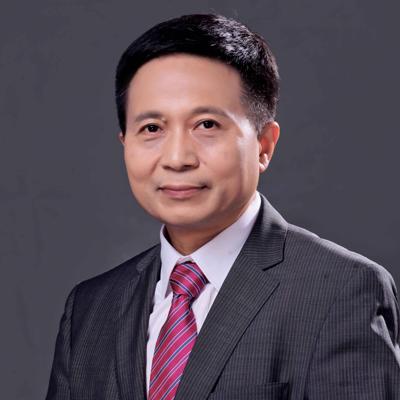
Xixiang Xu
Chief Scientist and Vice President,LONGi Central R&D Institute
Dr. Xixiang Xu is chief scientist and vice president of LONGi’s Central R&D Institute and is currently leading an R&D team over 300 technical staff members working on multiple PV technologies. Though the lab construction was delayed by COVID-19, within 18 months since June, 2021, the team had obtained 12 new world records of Si solar cell efficiency, including 26.81% and 26.56%, respectively, for n-type and p-type Si HJ solar cells.
Dr. Xu made his first amorphous Si thin film solar cell in 1981 during his senior year at Lanzhou University, and published related results in PVSEC-1 in 1984, Kobe, Japan. Dr. Xu started working in the PV industry in 1991 at USSC, a joint venture between Energy Conversion Devices, USA, and Canon, Japan.
Dr Xu is an inventor in various silicon PV technologies with 160 patents and 120 published papers or presentations.
Title: High Efficiency Silicon Heterojunction Technology Development in LONGi
Abstract: In PV industry, pursuing higher efficiency and lower cost is an everlasting endeavor. Many cell technologies have been promoted for higher efficiency since PERC, the current dominating cell technology, has approached its practical limit. Among these, silicon heterojunction technology is one of most promising candidates and has seen its fast development during the last few years. As a pioneer, LONGi team has made three-fold effort to improve performance of Si heterojunction-based technologies and achieved 12 new world records.
The start point was only 21.39% when the lab was established. With power loss analysis the limiting issues for Voc, Jsc and FF were identified. To overcome these bottlenecks, several main improvements were adapted. First, both n-type and p-type nanocrystalline silicon layers were successfully developed using VHF PECVD and implemented into SHJ cell for higher FF. In addition, oxygen was added into n-type nanocrystalline silicon for better light incorporation. Reactive plasma deposition was employed to prepare ICO with excellent opto-electrical properties, which reduced parasitic absorption and significantly lowered the contact resistance between TCO and doped layers. Laser transfer technology was also adapted to fabricate good aspect ratio metal grids, thus shading in the front was minimized while low contact resistance maintained. With these efforts, champion cell efficiencies up to 26.81% of n-type SHJ cell and 26.56% of p-type cell were obtained.
Furthermore, we have transferred the technology to a pilot manufacturing line with several modifications. First, wafer size was shifted from M6 to half M10 for better module performance. Then, high deposition rate of nanocrystalline silicon layers was adapted for higher throughput. In addition, double-side RPD was changed to PAR, which is combination of PVD and RPD, for higher throughput as well. Average efficiency of 25.5% was achieved from the pilot line and the yield reaches >95%. Modules made from these high efficiency SHJ cells exhibits power over 605W.
Based on our SHJ cells, perovskite/silicon tandem cells were also developed featuring industrial feasible CZ textured wafers. Certificated efficiency up to 31.8% was announced at SNEC 2023 and new efficiency record will be presented later.

 京公网安备 11010802039275号
京公网安备 11010802039275号